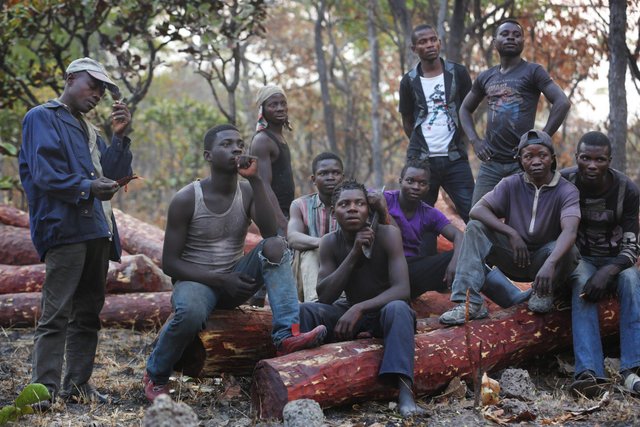GREEN, GREEN AND GREEN AGAIN...

Photo Source: https://qz.com/africa/1009008/chinas-demand-for-rosewood-furniture-is-decimating-africas-mukula-trees/
I grew up in he old South Africa with all its multitude of faults...
There were too many to mention... but, we could patrol our borders, save our animals, resources and even our fishing fields. Or so we thought...
We were warned about the Red Danger in no uncertain terms; Russians were BAD, but RED Chinese were off the scale!
More than 2 decades later, I can now count my Chinese friends with both hands and I must admit their cuisine is my favourite fast food. In fact, I attended Jonty's sister's wedding and I, as a Chinese convert, could follow the menu till about dish 10 which I think was Jellyfish...
So with this intro, I do not wish to offend anyone,but depleting scarce resources such as African, Asian and South American forests should be stopped NOW... As a "pre-historic" economics student, I understand the basics of Demand and Supply and can even draw you a graph of sorts, but this is about... raping our continent! The most disturbing thing is that African governments and governing politicians are complicit in this trade. This is only the tip of the ice-berg, I have not even spoken about rhino poaching and fishing off our coast and dark ships in the night!
Here below I copy sections of a website that tells the same old, sad...sad story of Africa and it's resources. Have a look for yourself: https://qz.com/africa/1009008/chinas-demand-for-rosewood-furniture-is-decimating-africas-mukula-trees/
Danhe making of traditional Chinese furniture is an art form whose craftsmanship dates back as far as 1,000 BC. The furniture is made from hongmu, or “red wood,” a dense, fragrant, and most importantly, hardy wood that allows Chinese artisans to use joinery and doweling instead of glue and nails. Sometimes the word is carved into elaborate patterns or landscapes. Other times its fashioned into sleek seating arrangements that recall imperial China.
On the other side of this market are the forests in Africa and southeast Asia where these hardwoods, more commonly known as rosewood, originate. Of the 33 woods classified as rosewood in China, 16 are endangered or approaching that point. Rosewood substitutes are also starting to come under pressure. Of those, the most threatened may be the Mukula tree, a slow-growing hardwood unique to southern and central Africa that is easily passed off as traditional rosewood.
There are no official statistics for how many Mukula trees have been felled, but demand for the wood is so high that Zambia has banned exports of the wood. In China, a tonne of Mukula sells for between 17,000 and 22,000 renminbi per tonne ($2,500 and $3,200 a tonne). Greenpeace estimates that as much as 15,000 tonnes of the wood are sold each month from just four of the biggest Mukula markets in Zhang Jiagang in eastern China, home to the country’s largest Mukula processing industry. China’s rosewood furniture market was worth at least 100 billion renminbi ($15 billion) in 2012.
I would like my grandchildren ... and on second thoughts... I would personally still like to see the forests and bushveld that I adore and which makes Africa so unique.
Article Source: https://qz.com/africa/1009008/chinas-demand-for-rosewood-furniture-is-decimating-africas-mukula-trees/
Here is another just for good measure: https://mg.co.za/article/2015-03-19-moz-will-be-stripped-of-its-forests-in-just-a-few-years
This article was also posted on Weku under my handle @sea-cottage today